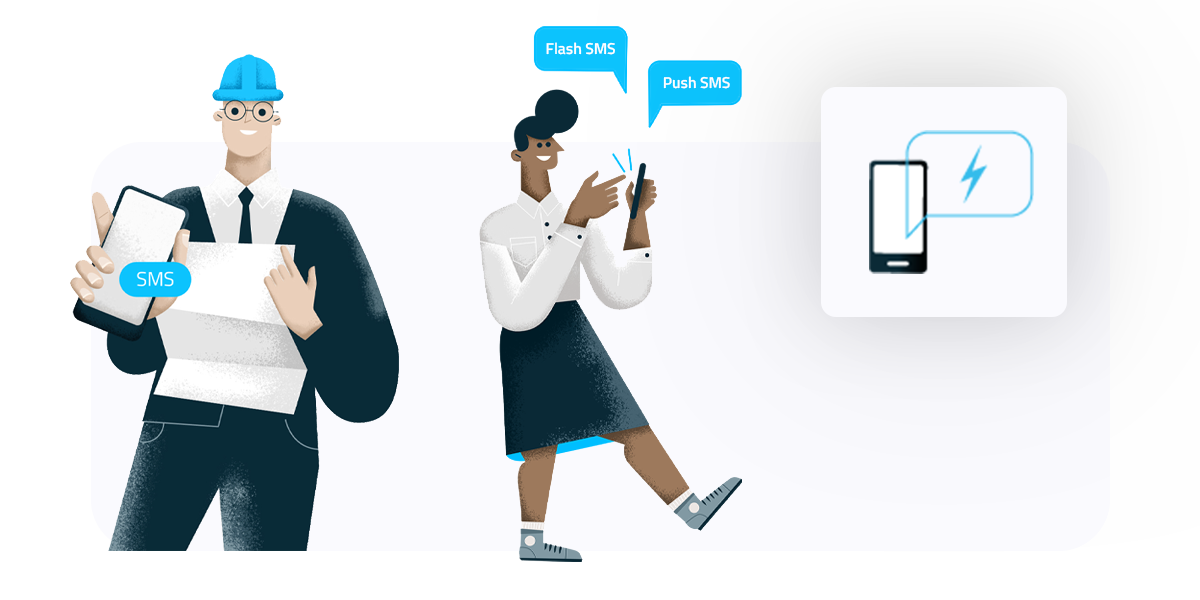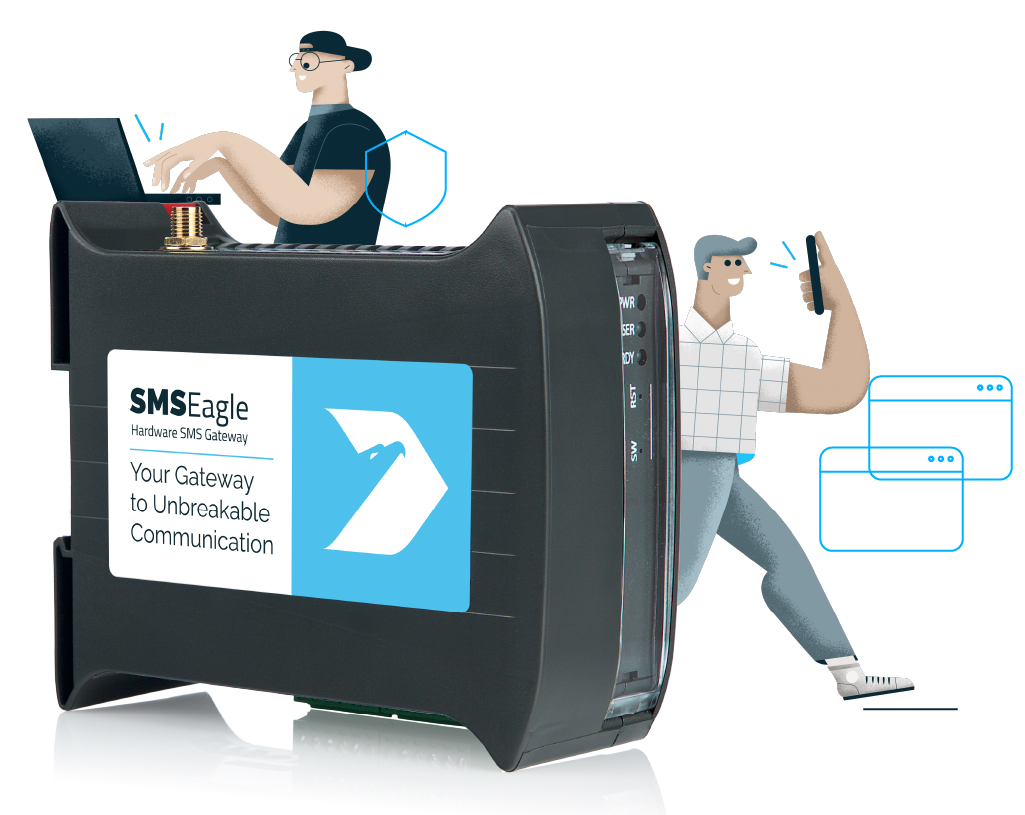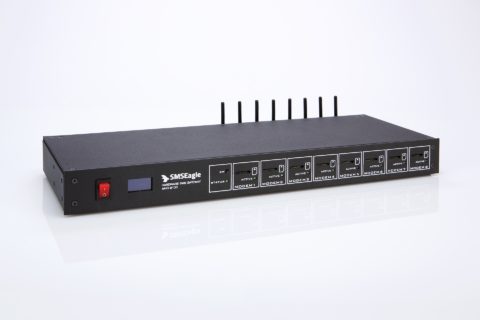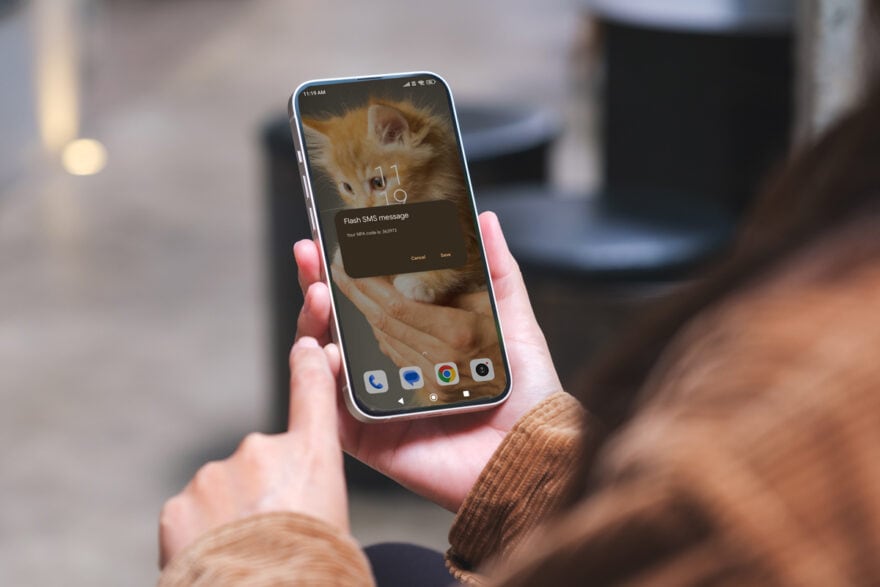
What is Flash SMS? How Does It Compare to Push Notifications?
Table of Contents
In the ever-evolving world of communication, businesses and individuals are always seeking innovative ways to grab attention and convey important information. Enter Flash SMS, a unique messaging tool that combines attention-grabbing immediacy with a layer of confidentiality. But what exactly is Flash SMS, and how does it work? Let’s dive in and explore this communication method.
Short Summary
- Flash SMS is a secure communication method that bypasses the inbox and appears directly on the recipient’s device screen.
- It provides an attention-grabbing way to send urgent, confidential or time sensitive messages.
- Best practices for using Flash SMS include targeting the right audience and considering timing and frequency.
Understanding Flash SMS
Flash SMS is a type of message that has a unique characteristic: it appears directly on the recipient’s phone screen without being stored in the device’s memory. This makes Flash SMS particularly engaging and secure, as it allows the sender to instantly catch the recipient’s attention and convey sensitive information without being stored in the device’s SMS inbox.
The origin of Flash SMS dates back to the late 90s, but it never gained widespread popularity due to security concerns and limited use cases. However, with the increasing reliance on mobile phones for communication, Flash SMS has found its niche in situations that require immediate attention and confidentiality.
What is Flash SMS?
A Flash SMS message, also known as a Class 0 SMS, is a priority message that appears directly on the recipient’s mobile phone lock screen or home screen without any user interaction. This means that the recipient does not need to open their SMS inbox to view the message, as it will pop up on their screen as soon as it is received. Unlike regular text messages, Flash SMS messages are not stored on the recipient’s device, making them an excellent choice for sending sensitive information or urgent alerts.
To send a Flash SMS, the sender must configure their message with a specific message class, usually Class 0. This class ensures that the message is treated as a Flash SMS by the recipient’s mobile phone, bypassing the standard SMS inbox and appearing directly on the device’s screen. The sender’s identity, or Sender ID, may not be displayed with the message, so it’s essential to include the sender’s name in the content of the message.
History of Flash SMS
Introduced in the late 90s, Flash SMS was initially developed as a means of quickly sending information directly to a recipient’s mobile screen. However, due to security concerns and a limited number of practical applications, it never gained widespread popularity.
Despite its limited adoption, Flash SMS has remained a niche communication tool, particularly for situations that require the immediate attention of the recipient. Its unique ability to bypass the SMS inbox and appear directly on the recipient’s screen has made it a valuable tool in specific use cases where immediacy and confidentiality are paramount.
How Flash SMS Works
The process of sending and receiving Flash SMS is quite simple, but requires the involvement of an SMS provider or hardware SMS gateway device that supports this type of message. To send a Flash SMS, the sender must configure their message with a specific message class, typically Class 0, and enter the necessary message details, including the recipient’s phone number and the message content.
When a recipient receives a Flash SMS, it appears directly on their phone screen, bypassing the device’s notification center. It’s crucial for the recipient to read and act upon the message immediately, as dismissing the message will cause it to disappear without being stored on the device.
Receiving Flash SMS
Upon receiving a Flash SMS, the message will be displayed directly on the recipient’s mobile device screen, regardless of whether the device is locked or in use, even on Android devices (depending on the device). It is essential for the recipient to promptly read and act on the message, as it will be removed from the screen if dismissed and will not be stored on the device.
This unique characteristic of flash messages, specifically Flash SMS, makes it particularly useful for situations that require immediate attention and action from the recipient, such as emergency alerts or time-sensitive information. In these scenarios, flash SMS work effectively to convey crucial information.
Advantages of Flash SMS
Flash SMS offers several benefits over traditional SMS, making it an attractive option for businesses and individuals looking for more engaging and secure communication methods. Two key advantages include its attention-grabbing nature and the added layer of confidentiality it provides by not being stored on the recipient’s device.
These benefits make Flash SMS an excellent choice for sending:
- Urgent or important messages that require immediate attention and action from the recipient
- Emergency alerts
- Confidential information
Attention-Grabbing
One of the most significant advantages of Flash SMS is its ability to capture the recipient’s attention immediately. By bypassing the notification center and appearing directly on the recipient’s screen, Flash SMS stands out from regular text messages and ensures that the message is not overlooked.
This attention-grabbing quality makes Flash SMS particularly effective for sending marketing messages, promotions, or other relevant content that requires immediate action from the recipient. By ensuring that the message is seen and read promptly, Flash SMS can help drive engagement and increase the likelihood of a positive response.
Confidentiality
Another notable advantage of Flash SMS is the level of confidentiality it provides. Since Flash SMS messages are not stored on the recipient’s device, they are not visible to other parties who may have access to the device.
This makes Flash SMS an ideal communication method for sending sensitive information or emergency alerts that should only be seen by the intended recipient. By ensuring that the message is only displayed on the recipient’s screen and not stored on their device, Flash SMS provides a level of privacy and security that is not available with traditional SMS.
Flash SMS vs. Push Notifications
Both Flash SMS and push notifications are methods of communication designed to grab attention and deliver important information to recipients. While they share some similarities, such as appearing on the recipient’s screen, they also have distinct differences and use cases.
To determine which communication method is best suited for a particular purpose, it’s essential to understand the key differences between Flash SMS and push notifications and weigh the benefits and limitations of each.
Similarities and Differences
The primary similarity between Flash SMS and push notifications is that both types of messages appear on the recipient’s screen without requiring any user interaction. This ensures that the message is seen and read promptly, increasing the likelihood of a positive response.
However, there are some key differences between the two communication methods. While Flash SMS messages are supported by almost all phones and work in remote areas with poor signal quality, push notifications require additional installation of communication app and require cellular Internet on the recipient phone. This makes Flash SMS more universal and available for anyone with a phone.
Choosing the Right Communication Method
Selecting the appropriate communication method depends on several factors, including the target audience, the content of the message, and the desired level of confidentiality. Flash SMS may be the preferred choice for situations that require immediate attention and a high level of confidentiality, such as emergency alerts or sensitive information.
In contrast, mobile push notifications can be used for marketing messages, app updates, or personalized notifications. To make the most of these features, it’s important to enable push notifications in your push notification campaigns. Implementing a well-planned push notification strategy can offer the advantage of being able to target a larger audience and provide more customization options, making push notification a marketing communication tool.
Summary
In conclusion, Flash SMS is a unique and powerful communication tool that offers several advantages over traditional SMS, including its attention-grabbing nature and added layer of confidentiality. Unlike push notifications tt doesn’t require installation of additional apps making it more universal. By understanding the differences between Flash SMS and push notifications, businesses and individuals can choose the appropriate communication method for their specific needs and ensure that their messages are seen, read, and acted upon by the intended recipients.
Frequently Asked Questions
What is a main purpose for Flash SMS?
A flash SMS is designed to deliver important messages like emergency warnings. It is designed to be quick and easy to read, so that the recipient can take action quickly. It also helps to ensure that the message is not lost in a sea of other emails or text messages.
Are Flash SMS messages stored on the recipient’s device?
Flash SMS messages are by default not stored on the recipient’s device, providing a level of confidentiality for the user.
This makes them a great choice for sending sensitive information, such as passwords or one-time codes.
How do you send flash text messages?
You need a device or a service that supports this kind of messaging. You might use a SMSEagle Hardware SMS Gateway to send flash text messages via web-based application or API.
Can Flash SMS be used for marketing purposes?
Yes, Flash SMS can be used for marketing purposes, as they are great for messages that require immediate attention and action.
About SMSEagle
SMSEagle is a professional hardware SMS gateway designed to seamlessly integrate SMS into your existing communication systems, including VoIP solutions. With its robust features, reliable performance, and secure message handling, SMSEagle helps businesses automate notifications, send alerts, and improve overall communication efficiency. Trusted by companies worldwide, SMSEagle supports multiple connectivity options, advanced scheduling, and real-time message tracking, making it an ideal choice for any organization looking to enhance their communication strategy.

Ready to see how SMSEagle can optimize your business communication? Request a demo today and experience the power of combining SMS with your VoIP services.

Explore SMSEagle demo device
SMSEagle is a hardware & software solution that guarantees a swift delivery of your messages to designated recipients, whether it’s for notifications, alerts, or important updates.
- 14-days free trial
- Access to physical device
- No credit card required
- Access to over 20 functionalities

SMSEagle v6.11 – Nowa wersja oprogramowania już dostępna!
Z radością ogłaszamy wydanie oprogramowania SMSEagle w wersji 6.11! Najnowsza aktualizacja przynosi szereg usprawnień i poprawek, a największe zmiany dotyczą użytkowników dodatku VOICE.

SMSEagle na Axle IT Event 2025
Co jeśli jedno nieodebrane powiadomienie spowodowałoby godziny przestoju lub naruszenie bezpieczeństwa? Na Axle IT Event 2025 eksperci podzielili się sposobami na uniknięcie tych zagrożeń dzięki lepszym rozwiązaniom. Jednym z kluczowych punktów programu była sesja Radosława Janowskiego o tym, jak zapewnić, że krytyczne alerty zawsze trafiają do właściwych osób. Oto, co warto wiedzieć.

MHD 8100-3G End of Life (EOL)
Chcielibyśmy poinformować, że z dniem 1 stycznia 2027 roku wsparcie dla urządzeń MHD 8100-3G zostanie zakończone. Po tej dacie modele te nie będą już oficjalnie wspierane przez nasze Centrum Wsparcia, a aktualizacje oprogramowania nie będą już wydawane.


